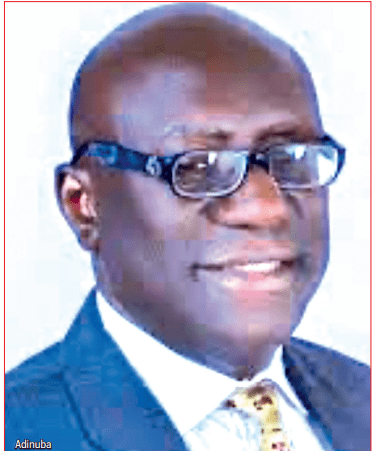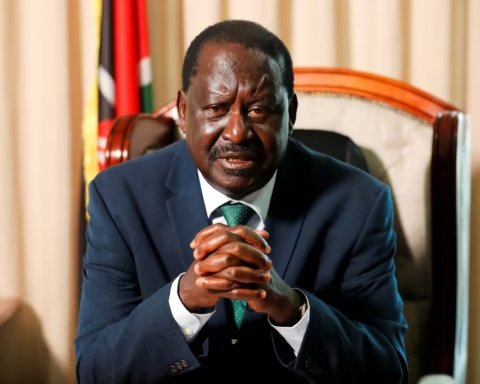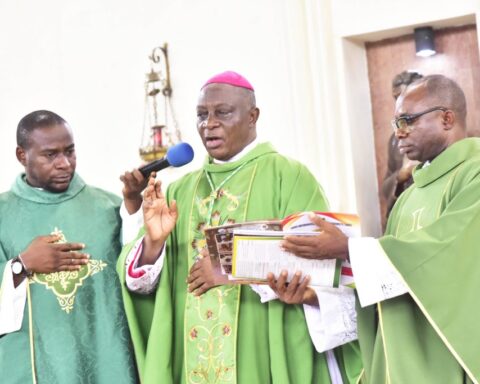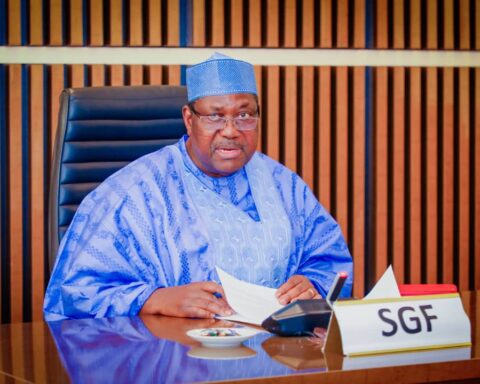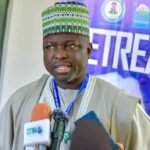Consultant to Geometric Power, Nigeria’s foremost integrated power company, Mr. C. Don Adinuba, who is a former Commissioner for Information and Public Enlightenment in Anambra State, in this interview with SUCCESS NWOGU, speaks on the operations and potential of the path-breaking Aba Independent Power Project led by Professor Bart Nnaji, a world-class engineering researcher.
How did Geometrics Power revolutionise electricity generation and distribution in Abia State?
It started when the then President of the World Bank, James Wolfensohn, visited Aba with the then Minister of Finance, Dr. Ngozi Okonjo-Iweala, who is now the Director General of the World Trade Organization (WTO), to see how Aba could be assisted to become truly an international center of manufacturing excellence.
Both Okonjo-Iweala and Wolfensohn used to be in the World Bank leadership before Okonjo-Iweala came to Nigeria to work as the Minister of Finance. They asked large-scale manufacturers, medium-scale manufacturers, and small-scale manufacturers their biggest challenge.
Almost all of them said it was a poor power supply. Okonjo-Iweala and Wolfensohn came to Prof Nnaji and asked if he could help with a power plant of about 50 megawatts capacity to supply power to industries in Aba and the environs.
It was a tough challenge. Nnaji had earlier led a small team of Nigerian engineers to build the Abuja 22MW Emergency Power Plant to supply electricity to the Federal Capital Territory. By that time, NEPA, as the state-owned utility was called, was constructing the Abuja transmission line from Abuja to Shiroro in Niger State.
With the assistance of former Vice President, Dr. Alex Ekwueme, who now is late, the then President Olusegun Obasanjo was able to give Nnaji’s team a chance to demonstrate what indigenous engineers could do. It became the first time Nigerian engineers, or even Nigerian entrepreneurs, would build a power plant.
It operated for almost three years. And for the period, the plant supplied power to places like State House, the NNPC corporate headquarters, the Federal Secretariat, the International Conference Centre, and the Central Bank of Nigeria, as well as the Abuja Business District. And the supply was 100%. It did not blink for a second.
It was based on that record that James Wolfensohn and Ngozi Okonjo-Iweala requested Nnaji to see if a similar thing could be replicated in Aba but this time on a permanent basis and on a bigger scale. By 2004, power was on the exclusive list, meaning only the Federal Government could generate, transmit and distribute power.
An agreement between the Geometric Group and the federal government, represented by the now defunct National Electric Power Authority (NEPA) and the Bureau of Public Enterprises (BPE), to generate and supply power in nine of the 17 local government areas in Abia State was subsequently signed. The agreement was amended the following year.
The facilities were built in record time in partnership with a consortium of international firms. Unfortunately, it appeared the people who came after Obasanjo had other ideas. During the privatization, the BPE published a notice and inserted it in the guidelines given to interested bidders that the Aba Ring-fenced Area was not part of the Enugu Electricity Distribution Company coverage area.
Yet, the government chose to ignore the notice and warning. We went to court and won at the Federal High Court, but the other party appealed against it. We were prevailed upon to resolve the matter amicably. Before it was settled out of court, the matter had dragged on for 20 years.
We had to pay Interstate Electrics, which owns over 60% of the Enugu Electricity Distribution Company PLC (EEDC), $29 million. The facility was made available by AfrEximBank. Because of what the government did, what could have been finished in three years lasted for some 20 years.
Since after the commission, what has been the power situation in Aba, especially the nine local governments, and the response of the people?
Well power service is not yet 100 per cent. Nobody was under the illusion it would be within two years of operation. But it is far better than the situation in the other parts of Nigeria. On September 10, 2025; Nigeria witnessed a nationwide blackout because of a grid collapse.
All parts of Nigeria were plunged into darkness except the Aba Ringfenced Area comprising nine of the 17 local government areas in Abia State. Our record of performance within two years is such that the Abia State government wants to negotiate with us to take over electricity supply to the remaining eight local government areas.
But I foresee a situation where we supply power, not just to the people of Abia State, but to the South East and beyond because it is in their own interest. The national grid is old, it’s unreliable, it’s fragile. If you put up to 5,000 megawatts load on it, it’s likely to trip off. It has limited capacity. This is the only national grid in a country as large as Nigeria, and with a population of
Our record of performance within two years is such that the Abia State government wants to negotiate with us to take over electricity supply to the remaining eight local government areas.
The other 11 distribution companies (DisCos) in Nigeria, or what they call the legacy DisCos, depend on this single national grid. It doesn’t make for reliable electricity or energy security. In the case of the Aba Independent Power Project, it’s a different scenario.
It generates its own power, but sometimes it experiences challenges. Natural gas supply is not as regular as it should be. When there is a shortage, Aba Power, the distribution arm of the Geometric Power group, now gets supplies from the national grid. Aba Power has two sources of power supply. One is from Geometric, which has a 188-megawatt plant, with turbines from General Electric of the United States.
General Electric is the biggest and oldest electricity equipment manufacturing company in the world. Its products are used by Geometric Power to generate power in Aba, and sell the electricity to Aba Power Electric Ltd. Aba Power gets electricity from this dedicated plant, and sometimes it receives supplies from the national grid when there are challenges like gas shortages. As a result, electric supply in Aba is far, far ahead of what we have in other parts of the country.
Has Aba Power or the Geometric Plant the capacity to generate and distribute power to the southeastern states?
We can supply to states beyond the South East. Why would we like to have constant power in Aba but not in Obigbo, in the Rivers State, which is a walking distance from Aba? Why should Aba have regular electricity but not Port Harcourt which is a 30-minute drive from Aba? We will be glad to supply power to, say, the Port Harcourt Electricity Distribution Company which serves the Southsouth.
We have a license to generate 188 megawatts. Now, if there is a huge demand from states around Abia, including Rivers, Cross River, Imo, Anambra, and Ebony, all we have to do is simple: Approach the Nigeria Electricity Regulatory Commission (NERC), and request it to scale up our license from 188MW to, let’s say, 300 or 400 or 500 megawatts.
That’s all. I think it’s a matter of time before this happens. It is going to happen. It’s in their own interest. Now, if you generate from Aba and you get your power from Aba, one thing is certain: It’s constant, and the quality is high. You have far less technical and financial losses.
What other challenge does Aba Power encounter apart from the gas challenge?
The distribution infrastructure we inherited. Some of the wires and some of the substations, distribution transformers and wires have been there since the 1960s, and have been poorly maintained.
So, what have you done to address this challenge?
We have built 150,000 kilometers of overhead wires and cables. We have built four brand new substations. We have refurbished, in addition, three substations inherited from the PHCN. And the refurbished ones are almost as good as the brand-new ones. We are going to commission new substations any time from now. There is a 20MW line to Factory Road, and another 20MW line to Ogbor Hill, and yet another 20MW to the Owerrinta Industrial Zone.
We have provided many smart meters to our customers. We did that with aggressiveness not seen in Nigeria’s history. And we are giving these people meters for free. We have 30 feeders, and we are moving from feeder to feeder in the aggressive smart meter deployment. We are providing not just every house, but every flat with its own new smart meter without pay. If there are 34 offices in a compound, we will give them 34 prepared meters.
Why do we do that? It is to avoid the usual disputes over who will pay what when people share meters. We are investing so heavily in prepaid meters because we believe in probity and transparency. Let people see what they’ve consumed, and, therefore, they’ll be encouraged to pay. We do not like estimated billing. If anything, we detest it.
It appears you do not have many customers. That’s why you are able to provide them with free smart meters?
We have between 250,000 and 300,000 customers in our database. How much is one prepaid meter? About N120,000 for a one-phase meter and N247,000 for a three-phase meter. Do the mathematics. Our budget for the meter rollout is about N41 billion. That’s what we are giving to the people of Aba. And we are only two years old.
Since you are giving out the meters free of charge, how did you fund it? And how will you recoup your investment?
When we say we mean business, we mean it. We are working in partnership with meter vendors. It is a vendorfinancing arrangement. We are working effectively with four; two are Chinese and two Nigerian. One is headed by a Nigerian from the southwest who is based in China.
And the second Nigerian company leader is from Abia State. We have worked out an arrangement with these firms to assemble the smart meters in our premises. We are creating some 35,000 jobs with this decision, and the beneficiaries include food vendors.
But have you not received financial assistance from the government?
Abia Power Electric Company Ltd and Geometric Power Ltd have not received one kobo as subsidies from the federal government or any government. We’ve not applied for subsidies. And we have no intention of applying for any subsidy. And that is the reason, or one of the reasons, why the Hon Minister of Power, Chief Adebayo Adelabu, regards what is going on in Aba as a model for the nation.
The nation is watching the Aba Independent Power Project with a view to learning how the power sector in Nigeria should be run. One of the reasons for the effectiveness and efficiency of the Aba Independent Power Project is that it is relatively a small project, in terms of geographical size.
You cannot compare it to, say, the Ibadan Electricity Distribution Company, (IBEDC) which covers the whole of Oyo, Osun, and Ogun including industrial places like Agbara Estate which we think are in Lagos, up to portions of Ekiti, Kogi, and Niger states. It’s so huge. If there is a serious problem in Arepo, the place where journalists have estates in Ogun State, you have to drive all the way from Arepo to Ibadan to report it.
And you wait for them to come all the way from Ibadan to fix it. The same problem obtains with the Benin Electricity Distribution Company. If there is a major problem at, say Afe Babalola University in Ekiti, you have to drive all the way to Benin to discuss it and then wait for some time for them to come all the way from Benin to fix it.
The situation is more challenging in the North because of the vastness of its land. But ours covers just nine local areas. You can reach anywhere within our coverage area in an hour. Besides, we are an agile firm, ready to respond to challenges without protocols and bureaucratic bottlenecks.
Why have you not applied for financial assistance from the government? From inception, we decided to build a model not dependent on government subsidies, grants or interventions. If you borrow money from banks in anticipation of government intervention, you may not get a kobo for more than a year. What will you tell the banks? In the other DisCos, the Federal Government has about 40 per cent stake in each. But in Aba Power, the federal government doesn’t have one kobo share.
On the smart meters that you distribute free, how do you intend to recoup your investment?
Transparency is critical in business. When people see that what they consume is what they are asked to pay, they would be more willing to pay, even if it’s higher, than they would be willing to pay when you give them an estimated bill. I’ve seen people who were paying N120,000 a month when it was estimated billing. They are now having smart meters, and they are willing to pay higher.
This is because of transparency. Our customers see us as a partner in progress because of how we relate to them. For instance, we have mounted a publicity campaign, telling people how them how to save costs. We advise them on how to use electricity.
We are in a country where people switch on their freezers and fridges, and even air conditioners when they are not even around because they don’t know how long light will be available. But now there is constant power supply. So if you go to work at 8 o’clock am and your fridge is switched off, you come back at 4-5pm.
Everything will still be cool and fresh. And you have saved money. We’ll keep on explaining to them. If you go to filling stations, you will see up to 20 bulbs switched on even by 2 p.m. That is not right. We want you to save money.
What is your tariff like?
Tariffs are determined by NERC. No DisCo can determine its tariff.
So you operate the same tariff with other DisCos as determined by NERC?
Yes, basically the same thing. But you know, on April 3, 2024, NERC approved a new tariff regime for the 11 legacy DisCos in which the Federal Government has 40 per cent interest. But we operated the old tariff for nine months at a huge cost. It was only last December 30 that NERC directed us to start charging a similar tariff as the other DisCos, with effect from January 1, 2025.
Follow us on all social media platforms @dailyquery for news and analyses around the globe.
